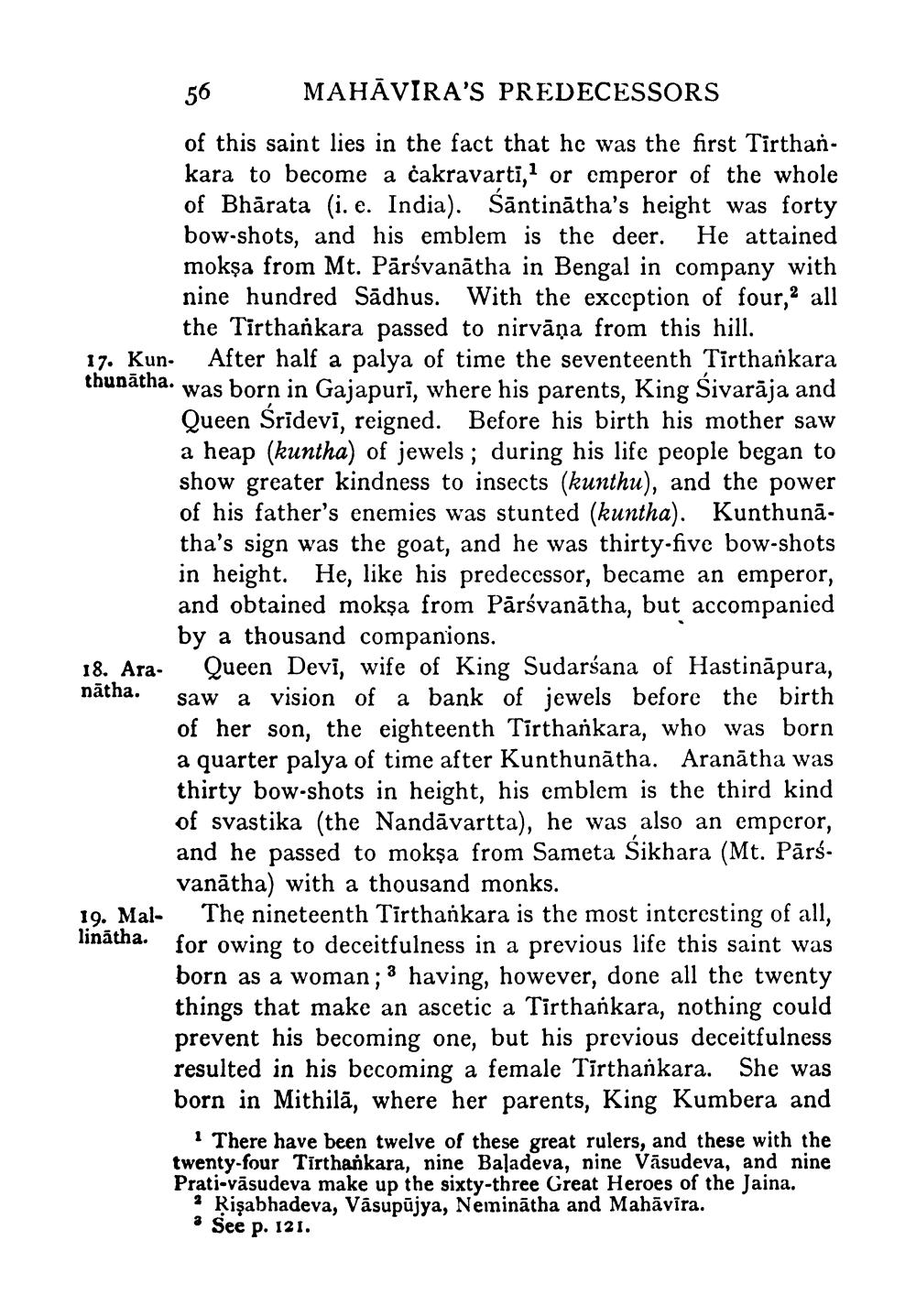________________
56 MAHĀVIRA'S PREDECESSORS of this saint lies in the fact that he was the first Tirthankara to become a čakravarti, or cmperor of the whole of Bhārata (i. e. India). Sāntinātha's height was forty bow-shots, and his emblem is the deer. He attained mokşa from Mt. Pārsvanātha in Bengal in company with nine hundred Sädhus. With the exception of four,2 all
the Tirthankara passed to nirvāṇa from this hill. 17. Kun. After half a palya of time the seventeenth Tirthankara thunatha. was born in Gajapurī, where his parents, King Sivarāja and
Queen Sridevī, reigned. Before his birth his mother saw a heap (kuntha) of jewels; during his life people began to show greater kindness to insects (kunthu), and the power of his father's enemies was stunted (kuntha). Kunthuna. tha's sign was the goat, and he was thirty-five bow-shots in height. He, like his predecessor, became an emperor, and obtained mokşa from Pārsvanātha, but accompanied
by a thousand companions. 18. Ara. Queen Devi, wife of King Sudarśana of Hastināpura, nātha.
saw a vision of a bank of jewels before the birth of her son, the eighteenth Tirthankara, who was born a quarter palya of time after Kunthunātha. Aranātha was thirty bow-shots in height, his emblem is the third kind of svastika (the Nandāvartta), he was also an emperor, and he passed to mokşa from Sameta Sikhara (Mt. Pārś.
vanātha) with a thousand monks. 19. Mal- The nineteenth Tirthankara is the most interesting of all, linātha.
for owing to deceitfulness in a previous life this saint was born as a woman; 2 having, however, done all the twenty things that make an ascetic a Tirthankara, nothing could prevent his becoming one, but his previous deceitfulness resulted in his becoming a female Tirthankara. She was born in Mithilä, where her parents, King Kumbera and
There have been twelve of these great rulers, and these with the twenty-four Tirthankara, nine Baladeva, nine Vāsudeva, and nine Prati-vasudeva make up the sixty-three Great Heroes of the Jaina.
· Rişabhadeva, Vásupūjya, Neminātha and Mahāvīra. * See p. 121.




